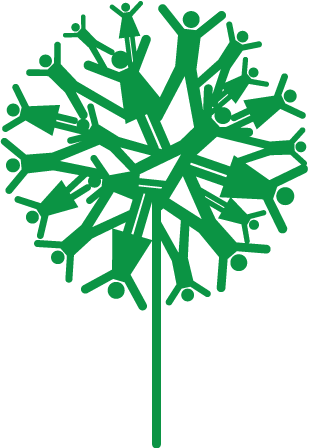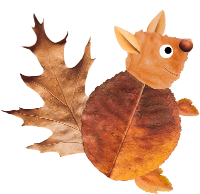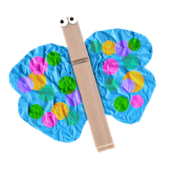Curriculum
As an Ofsted-registered school, we must follow the early years foundation stage of the national curriculum. The revised Early Years Foundation Stage Framework (Early Years Foundation Stage, DCSF, 2021) came into statutory force in September 2021. It provides both a statutory framework; setting out the legal requirements relating to learning, development and welfare; and practice guidance which sets out three prime and four specific areas from birth to five which are:
Prime areas
- Communication and Language
- Physical Development
- Personal, Social and Emotional Development
Specific areas
- Literacy
- Mathematics
- Understanding The World
- Expressive Arts and Design
Why the prime areas are ‘prime’
As emphasised in the original Tickell review of the EYFS, the prime areas are fundamental to children’s successful learning in the specific areas. The specific areas cannot be encountered in isolation from communication and language or personal, social, emotional and physical development since children always experience the world through communication and physical and sensory involvement. A strong foundation in the prime areas is essential as evidence shows that, if it is not securely in place by age five, it holds children back in other areas of learning and development.
This page contains information about what the early years foundation stage covers and how we teach it. If you would like to view the early years framework document, effective September 2021, it is available below.
Principles of EYFS
Four guiding principles, which shape practice.
1. A unique child
Every child is a unique child, who is constantly learning and can be resilient, capable, confident and self‐assured.
2. Positive relationships
Children learn to be strong and independent through positive relationships.
3. Enabling environments
Children learn and develop well in enabling environments, in which their experiences respond to their individual needs and there is a strong partnership between practitioners and parents and/or carers.
4. Learning and Development
Children develop and learn in different ways and at different rates. The framework covers the education and care of all children in early years provision, including children with special educational needs and disabilities.
Characteristics of Effective Learning
The ways in which children engage with other people and the environment – playing and exploring, active learning, and creating and thinking critically – underpin learning and development across all areas and support the child to remain an effective and motivated learner.
- Playing and Exploring
- Active Learning
- Creative and Critical thinking
Trying new things – Persevering – Having their own ideas
The Characteristics of Effective Learning are about how children learn rather than what they learn. The way in which the EYFS is delivered should encourage children to develop Characteristics of Effective Learning; learning dispositions applicable to all areas of learning and providing a good foundation for lifelong learning.
“Every child deserves the best possible start in life and the support that enables them to fulfil their potential. Children develop quickly in the early years and a child’s experiences between birth and age five have a major impact on their future life chances.”
Communication and Language
Communication and language play a central role in the curriculum for it is through this that children form and express their thoughts, feelings and ideas and it promotes co-operation and confidence. Children express themselves in many ways. We value self-expression and communication through gestures, signs and facial expression, music, dance and art, as well as through developing verbal language.
In all activities, we aim to provide experiences, which will enrich the children’s language development and help them gain the confidence necessary for listening, talking to one another, adults and exploring and understanding the concepts of reading and writing.
Children join us at all stages of development in language and communication and many will have English as an additional language to their home language. All languages verbal and non-verbal are encouraged to enable children’s communication skills. We recognise that fluent use of English is a very important goal, which we support through a wide range of provision.
Physical Development
Much of the children’s learning occurs in the garden and the outdoor provision. The learning opportunities provided in this area are given as much attention as those provided indoors. The children have access to the garden at all times. We have a large outdoor space with plants and trees, an allotment, where children plant flowers and seeds, climbing equipment and sandpit. Children learn to balance, steer toys competently, climb, hop, skip, jump, throw and catch, push and pull and use their bodies in an imaginative way. They also learn the vocabulary of movement, shape and space and are just as likely to be developing language, maths or science skills here as they would be in the classroom.
In each session the children are supported to access a healthy snack and when they stay for lunch, it is served in a family service style. Children begin to learn about varieties of food to keep them healthy. We help them to enjoy and understand the health benefits of physical activities and support them to become more independent in skills such as dressing. They learn about risk taking and how to keep safe while exploring the learning environment.
Literacy
This area of learning focuses on the early skills essential in reading and writing. Imaginative play provides a wealth of opportunities for developing these skills in a meaningful context – from writing out the shopping list in the home corner to running a shop in the garden.
There are a range of resources provided around the nursery, for example, the role-play areas, office resources and clipboards for outside, where children will often practice their developing reading and writing skills. There is also a book corner in each classroom, which is popular with the children. In each class there is a basket of books which may be borrowed to take home. Parents are encouraged to choose a book with their child.
Over their time at Eastwood Nursery, children are supported to see themselves as a reader whatever their stage of development. They hear stories and rhymes daily in small groups and a child can share a book with an adult individually.
Some children enjoy playing the role of teacher and can be seen reading to their friends. Children develop their awareness of the sequence stories, early phonics, rhyme and alliteration.
As in all their learning, children are individuals and have different strengths and learning styles, and this is always our starting point.
Mathematics
The opportunities for mathematical development, like those for language, are everywhere in the nursery. When children are playing with the blocks, observing different shapes, finding the right size of dress for the doll, manipulating the dough, singing finger rhymes and songs, they are learning maths. A great deal of mathematical learning goes on at the sand or water trolley, in the home corner, as part of the cooking activity and in the garden. Importantly, children are working out how to solve a range of problems.
We aim to provide children with a wealth of opportunities to enrich support and extend their mathematical experience and encourage them to become more able, skilled and confident learners. Materials and equipment are clearly labelled and accessible to the children. These include materials for counting, sorting, matching, comparing and classifying, pattern making, construction, 3D and 2D shapes, weighing and measuring as well as computer software, puzzles and games.
Understanding the World
This area of learning involves exploring and investigating, experimenting, observing, raising questions, and making hypotheses as children develop their own theories about the world around them. At this age, the starting point for most children in this area of development is themselves and their families. In all the play activities we provide materials and experiences that will stimulate an interest in the children and encourage them to observe closely, ask questions, experiment, guess ‘what will happen if?’… and tell us what they have found out. Our garden provides a range of interesting experiences for the inquisitive mind, from discovering new insects to building a den.
Expressive Arts and Design
Creativity incorporates all areas of learning and imaginative thinking is the key to rich thinking.
When children are engaged in imaginative play, they are ‘acting’ naturally and this role play can be extended by appropriate adult interaction, props and dressing up clothes. Puppets, story props and small world equipment such as play people can encourage children to dramatise their own or a favourite story.
We encourage the children to be creative with a variety of materials in design and technology for models, drawings, collage and paintings.
The children listen to a variety of music as well as having access to musical instruments and a piano. They are also encouraged to make their own
instruments and compositions. Dancing, singing, playing and clapping games help them to understand rhythm and different musical styles.





